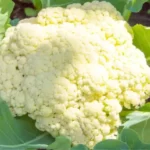Companion planting is a fun and rewarding way to grow a few plants and root crops together, benefiting both you as the grower and the plants themselves. With a sound companion planting process, you can choose to plant different crops closer to each other or grow complementary plants within the same garden bed for maximum potential. So let’s talk about some great companion plants for beets.
If you love beets like I do and are a grower looking to improve the health and productivity of these delicious root crops, then this article is for you! Beets can be paired with various great companion plants.
Common companion crops for beets include lettuce, spinach, radishes, onions, and peas. These plants can benefit beets by providing shade, attracting beneficial insects, and improving soil quality, offering your beets a healthy and nutrient-dense garden environment.
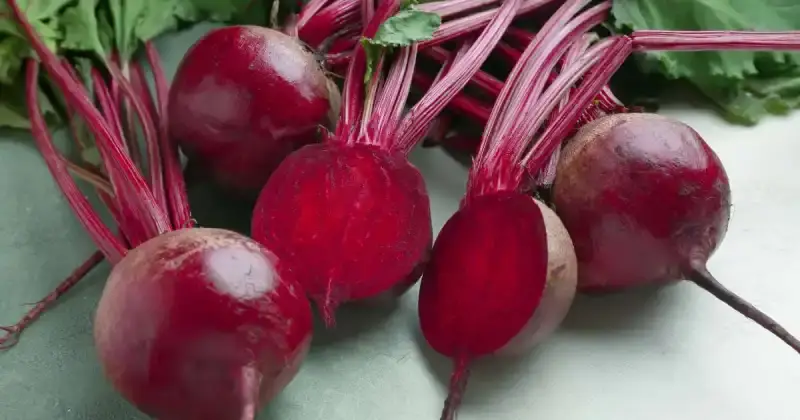
In this article, we’ll explore how these companion crops create a healthy and productive garden that is well-suited to serve your beets. I’ll also list some of the best companion plants to pair with beets, so you’ll know exactly what makes your juicy reds a happy and healthy addition to your edible Eden.
Humble Highlights
- Save your hard-earned money by knowing the 5 best companion plants for beets, so you’ll never again need to guess what the best company your beetroot enjoys.
- Gain valuable time understanding how beets benefit most from friendly companion plants and how you can set your garden up for produce success!
- Uncover the top 3 plants not to grow near your beets to help protect your beetroot from harmful pests and disease.
How Do Beets Benefit From Companion Planting
Beets benefit from various companion crops that provide and contribute multiple types of support to your garden. For example, other plants provide shade for beets, which can be beneficial in hot or dry climates. Shade-providing crops help the soil retain moisture, reducing water stress and preventing your soil from becoming too dry.
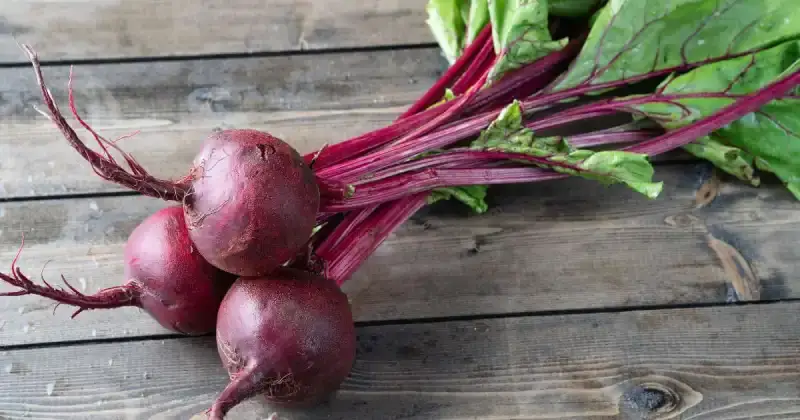
Other plants help attract beneficial predatory insects (like lacewings and ladybugs) and pollinators (honey bees), which can help improve the beets’ overall health and productivity. Attracting these insects can also help to deter pests like colorado potato beetles and flea beetles that look at your beets with eyes the size of hubcaps. 1
In addition to providing shade and attracting beneficial insects, some companion crops also help to suppress weeds and improve soil quality and structure. Cover crops (like rye and oats) are plants intentionally grown to help to protect your soil from erosion thereby improving overall soil structure.
Here’s a great video I found that goes into detail about planting beets with lettuce and cabbage using a seeding square that makes companion planting super easy.
How to Choose the Best Companion Crops for Beets
When choosing companion crops for beets, it’s essential to consider the specific requirements your beet plants expect and demand by choosing crops that are compatible with their needs.
For example, if you pitch your tent in a hot or dry climate, it may be wise to choose some shade-providing crops as companions. On the other hand, if your garden is in a cooler climate, selecting cool season crop adapted to cooler temperatures that have similar growing conditions to your beet crops may be more helpful. 2
Best Companion Plants for Beets
There are numerous companion crops that can thrive alongside beet plants, offering a range of benefits. Here, I present my top five picks for companion crops that can bolster the health and productivity of your beet greens.
- Onions (The Allium Family)
- Bush Beans
- Spring Radishes
- Leafy Greens
- Cabbage (The Brassica Family)
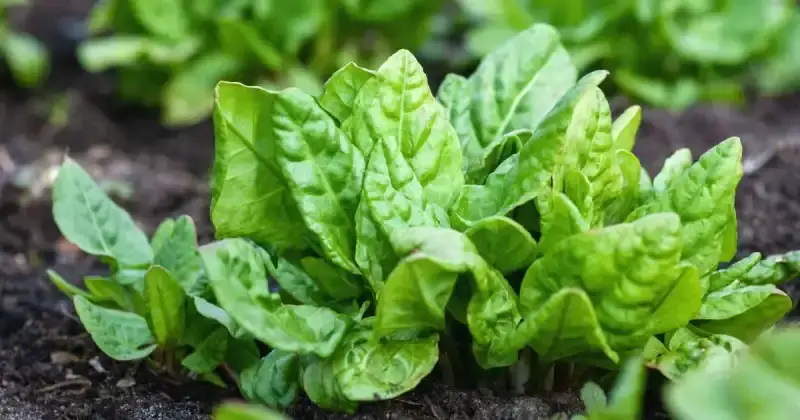
Let’s delve into each a bit further, so you’re beets can remain happy and healthy throughout their lifecycle.
The Allium Family
Allium family plants such as onions and garlic are good beet companion plants because they emit a strong odor that helps in repelling insect pests that absolutely adore beets, like japanese beetles, sugar beet flea beetles, and aphids.
Onions can also help suppress weeds and improve your garden’s soil structure, making them an excellent beet companion plant. 3
Additionally, the onion family are nitrogen-fixing plants. A nitrogen-fixing plant converts airborne, atmospheric nitrogen into a usable soil-borne form that is more readily available by plants. Meaning the humble onion can take nitrogen from the air and transform or “fix” this usable nitrogen for use in the soil so your beets can quickly absorb this vital element. Pretty impressive, wouldn’t you say?
Bush Beans
Bush beans, also known as green beans, are a common choice for companion plant with beets. Like onions and garlic, green beans can provide several benefits to beets, including improving soil fertility and structure, suppress weeds, and attract beneficial insects and pollinators.
In particular, green beans can effectively control pests like aphids and mites because they attract beneficial insects like ladybugs and lacewings that help fight these bad guys.
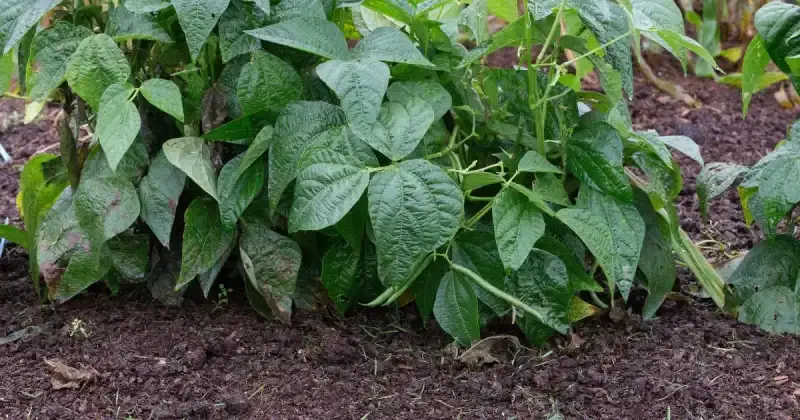
And speaking of ladybugs, it’s important to remember that ladybugs are a gardener’s best friend, as they are a very effective natural control against pests like spider mites without having to use pesticides.
Overall, bush beans can be a useful companion plant for beets in a well-designed garden.
Spring Radishes
One of the main benefits of planting radishes with beets is that radishes are fast growers and have a shallow root system that helps loosen the soil in your garden. These shallow roots provide better drainage, more soil aeration, and allow for better nutrient absorption, saving you loads of time.
Creating this better soil environment provided by radishes is especially beneficial for beets, which have deep taproots that can benefit from well-drained, loose soil. By planting radishes alongside beets, you can help improve the soil structure and promote healthy root growth in your beets.
Leafy Greens
Like beets, both lettuce and spinach grow well in cool temperatures, which makes them well-suited companions for beets. Greens can also be harvested before the beets need more space to spread out, which can be helpful within a small vegetable garden.
In addition to providing space-saving benefits, lettuce, and spinach can also help to suppress weeds and improve soil structure in your garden beds. Like the radishes mentioned above, lettuce greens have a shallow root system that helps to loosen the soil and provides competition for weeds, making it harder for them to root.
Leafy greens are commonly grown among many vegetable plants, making them one of the most versatile crops you can utilize in your garden. Leafy vegetables typically have a shorter life cycle than most vegetable plants, making them an ideal choice as companions
Garlic (from the Allium family) and chives (from the Amaryllidaceae family) are good neighborly partners for lettuce since they repel pests, like aphids, who commonly munch on lettuce leaves. This friendly relationship between garlic, chives, lettuce, and beets can work wonders for your vegetable garden.
The Brassica Family
The members of cabbage family and kale are nitrogen-fixing plants, just like the onions mentioned above. And like lettuce and spinach mentioned above, brassicas are excellent choices for growing in cooler climates, early-season harvests in the spring, and late seasons harvests in the fall, and will grow well alongside your beets. 4
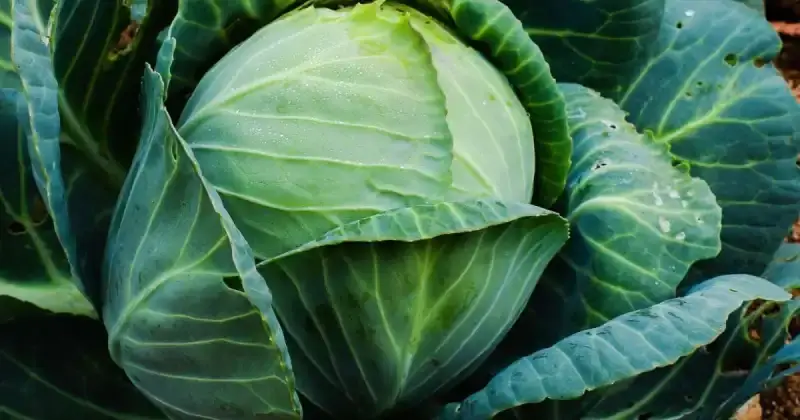
Aromatic Herbs Make Great Companions For Beets Too
Most aromatic herbs are great companion plant to grow beets and are an excellent addition to supplementing your garden. Strongly scented herbs like mint, sage, catnip, thyme, and rosemary can be great for organic pest control as they repel insect pests like flea beetles and cabbage moths, making your job a lot easier.

Fragrant herbs also make good companions for beets because they can serve as an additional cover crop to help suppress weeds by providing extra competition for light, water, and nutrients. 5
If you have a garden that is short on space, herbs can be beneficial in areas where weeds are particularly prevalent and burdensome. A cover crop of scented herbs can also help to improve the soil’s ability to retain moisture and nutrients, acting like a living mulch within your growing area.
Aromatic herbs also promote an inviting environment for pollinators and predatory (the good guys) insects. Remember, the more you create an attractive environment for beneficial insects, the less work you’ll need to do to keep your garden healthy.
Be sure to make your growing space irresistible for these beneficials to hang around your garden, and in doing so, you’ll be allowing Mother Nature to work hard on your behalf.
Bad Companion Crops for Beets
Knowing the best beets companion plants is just as important as understanding what not to plant if you’re looking for a healthy beet crop. Plants such as field mustard, pole beans, and Swiss chard are the most common plants that are not ideal companion plants due to their characteristics and growing habits.
Let’s get into each one and explain why you’ll want to avoid these selections.
Field Mustard
Field mustard can be a poor companion plant for beets because it is a fast-growing plant that can tower over beets and compete for light, water, and nutrients. Field mustard can also be prone to bolting or producing flowers and seeds earlier than expected within its growth cycle, which reduces the plant’s productivity and attractiveness as a beet companion.
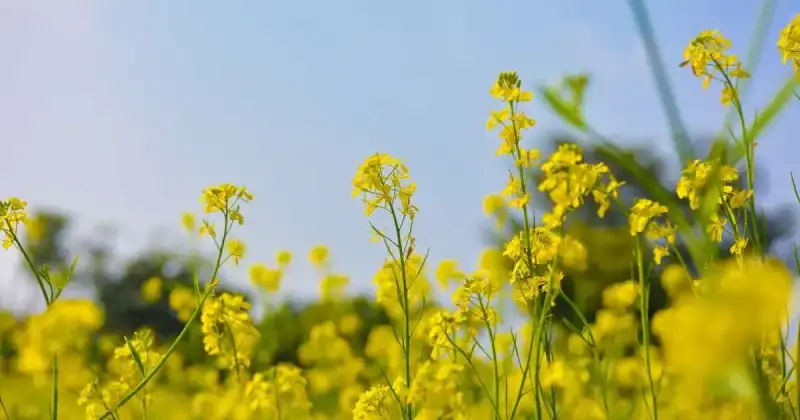
Bolting is a plant’s normal response to stress and one you’ve probably seen in your garden if you’ve been growing for any length of time. Specific circumstances that can cause your vegetable plants to bolt include root stress due to compaction or overcrowding, higher temperatures, and increasing day length.
Pole Beans
Unlike bush and butter beans that are great companion crops to grow beets, pole beans should be avoided around beet greens because they are a vining plant that can grow tall while taking up tons of space and blocking sunlight. This vining can be especially problematic in a small garden or if space is at a premium.
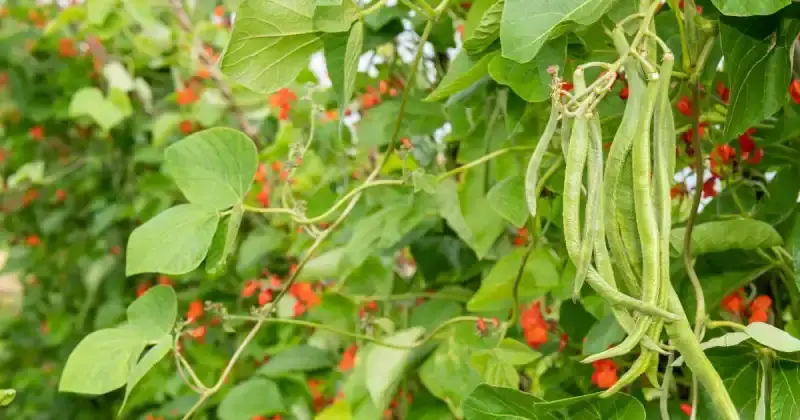
Pole beans can also be prone to garden pests and diseases that similarly affect beets, such as the bean mosaic virus and Mexican bean beetles. Therefore, if you decide to grow both beets and pole beans, it’s best to keep both crops separated and in different parts of your garden for the best results. 6
Swiss Chard
Swiss chard may also be a poor companion plant for beets because it is a fast-growing plant that competes with beets for light, water, and nutrients. Swiss chard is also prone to pests and diseases that can similarly affect beets, such as slugs and downy mildew, neither of which you want in any abundance in your growing area.

Conclusion
Companion planting can be a valuable technique for improving the health and productivity of your garden. As a competent grower, you’d be wise to employ this ancient yet simple strategy while taking your edible Eden to the next level.
When carefully selecting your beet companion plants, you’ll also create a healthy and productive garden environment that is well-suited to appeal to beneficial insects. Bees, butterflies, ladybugs, and lacewings are just some of the good bugs that your garden needs to truly thrive and prosper.
By planting complementary or mutually beneficial plants near your beets, like onions, radishes, leafy greens, bush beans, cabbage, and a host of aromatic herbs like mint, sage, and thyme, you’ll be well on your way to growing an excellent beet harvest.
What companion plants have you grown with your beet crop? In the comments below, join the conversation and let us know how your beets turned out.
SOURCES
- Montana State University, Extension – The Science Of Companion Planting In The Garden
- South Dakota State University, Extension – Beets: How To Grow It
- Washington State University, Extension – Growing The Allium (Onion) Family
- University Of Massachusetts, Amherst – Cover Crops, Brassicas
- Wikipedia – Allium
- University Of New Hampshire, Extension – How Can I Manage Pests While Minimizing Harmful Effects On My Health And The Environment?

